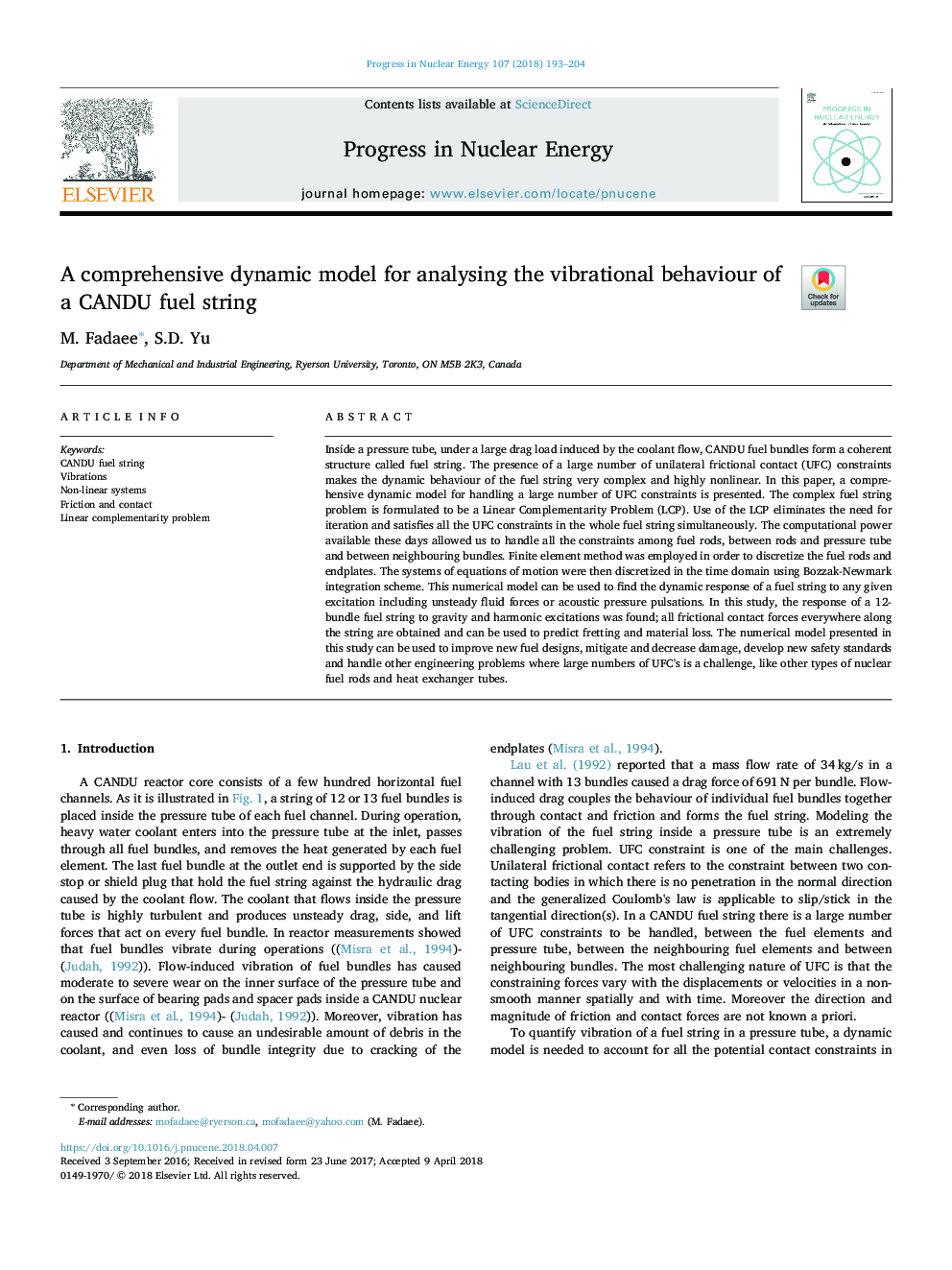| Article ID | Journal | Published Year | Pages | File Type |
|---|---|---|---|---|
| 8084239 | Progress in Nuclear Energy | 2018 | 12 Pages |
Abstract
Inside a pressure tube, under a large drag load induced by the coolant flow, CANDU fuel bundles form a coherent structure called fuel string. The presence of a large number of unilateral frictional contact (UFC) constraints makes the dynamic behaviour of the fuel string very complex and highly nonlinear. In this paper, a comprehensive dynamic model for handling a large number of UFC constraints is presented. The complex fuel string problem is formulated to be a Linear Complementarity Problem (LCP). Use of the LCP eliminates the need for iteration and satisfies all the UFC constraints in the whole fuel string simultaneously. The computational power available these days allowed us to handle all the constraints among fuel rods, between rods and pressure tube and between neighbouring bundles. Finite element method was employed in order to discretize the fuel rods and endplates. The systems of equations of motion were then discretized in the time domain using Bozzak-Newmark integration scheme. This numerical model can be used to find the dynamic response of a fuel string to any given excitation including unsteady fluid forces or acoustic pressure pulsations. In this study, the response of a 12-bundle fuel string to gravity and harmonic excitations was found; all frictional contact forces everywhere along the string are obtained and can be used to predict fretting and material loss. The numerical model presented in this study can be used to improve new fuel designs, mitigate and decrease damage, develop new safety standards and handle other engineering problems where large numbers of UFC's is a challenge, like other types of nuclear fuel rods and heat exchanger tubes.
Related Topics
Physical Sciences and Engineering
Energy
Energy Engineering and Power Technology
Authors
M. Fadaee, S.D. Yu,
